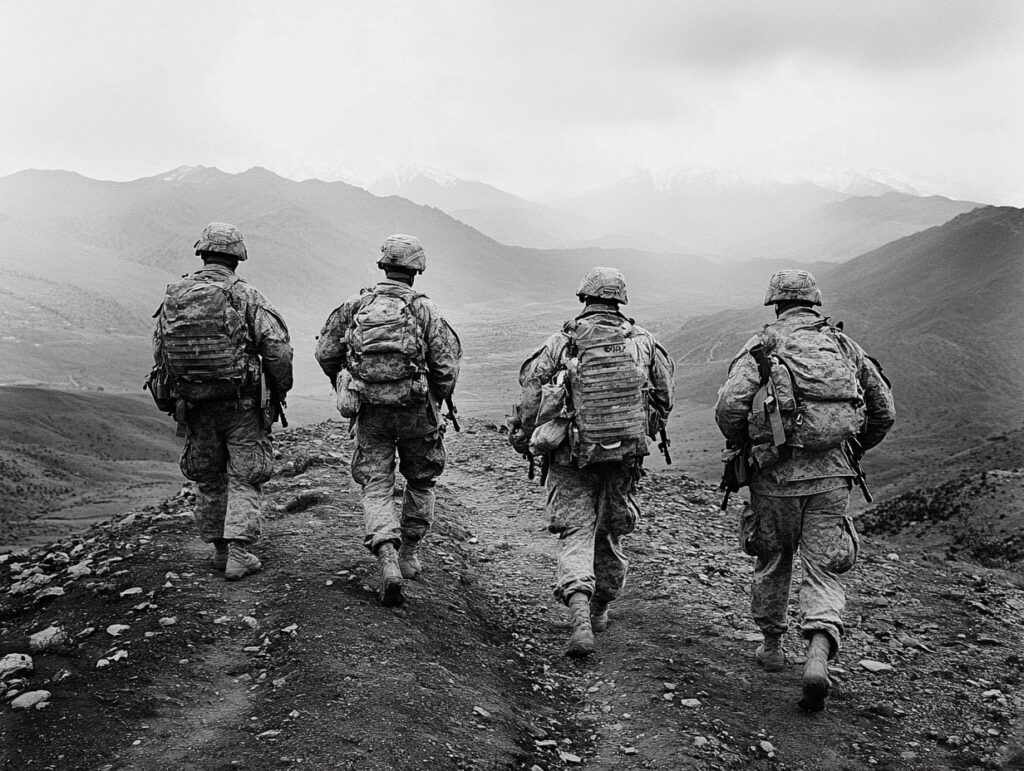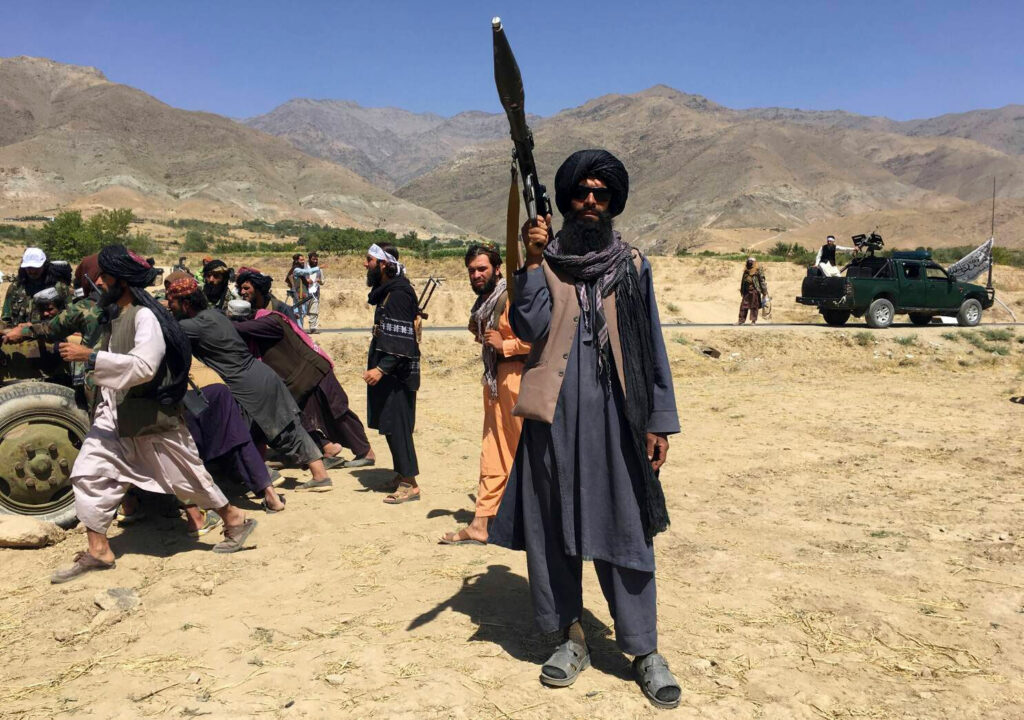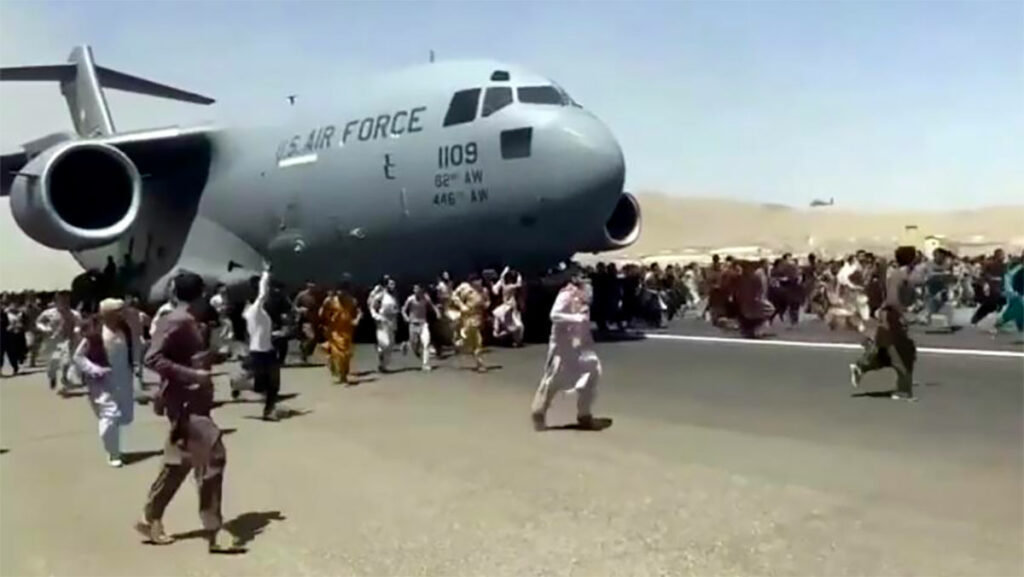An in-depth examination of the 20-year War in Afghanistan, covering its causes, key players, major battles, turning points, and lasting consequences.
The War in Afghanistan, spanning from 2001 to 2021, was initiated by the United States in response to the September 11 attacks. The primary objective was to dismantle al-Qaeda and remove the Taliban from power for harboring terrorists. The conflict evolved into a prolonged engagement involving nation-building efforts, counterinsurgency operations, and a complex interplay of international forces. Despite significant investments in military and reconstruction efforts, the Taliban regained control in 2021 following the withdrawal of U.S. and NATO troops. The war resulted in substantial human and financial costs, with over 2,400 U.S. military fatalities, tens of thousands of Afghan civilian deaths, and expenditures exceeding \$2 trillion. The conflict’s end has left Afghanistan facing humanitarian crises and political instability, raising questions about the efficacy of prolonged military interventions.

What Were the Reasons for the War in Afghanistan
The War in Afghanistan was primarily triggered by the terrorist attacks on September 11, 2001, orchestrated by al-Qaeda, which was based in Afghanistan under the protection of the Taliban regime. The U.S. demanded the Taliban hand over Osama bin Laden; their refusal led to the initiation of military operations.
The immediate goal was to dismantle al-Qaeda’s operational capacity and remove the Taliban from power to prevent Afghanistan from being a safe haven for terrorists. This objective was part of the broader “Global War on Terror” strategy adopted by the U.S.
Beyond counterterrorism, the U.S. aimed to establish a stable, democratic government in Afghanistan. This involved rebuilding institutions, promoting human rights, and fostering economic development. However, these nation-building efforts faced challenges due to Afghanistan’s complex tribal dynamics, corruption, and lack of infrastructure.
The war also had geopolitical implications. The U.S. sought to prevent regional instability that could arise from a failed Afghan state. Additionally, maintaining a military presence in Afghanistan was seen as a strategic move to counter influences from neighboring countries like Iran and Pakistan.
Over time, the mission’s scope expanded, and the objectives became less clear. The focus shifted from counterterrorism to counterinsurgency, requiring more resources and a longer commitment. This shift led to debates about the war’s direction and the feasibility of achieving its goals.
In summary, the War in Afghanistan was initiated as a direct response to a terrorist threat but evolved into a complex conflict involving counterinsurgency and nation-building, influenced by regional and global geopolitical considerations.
Who Was Involved in the War in Afghanistan
The War in Afghanistan involved multiple actors, each with distinct roles and objectives.
United States and NATO Allies: The U.S. led the invasion under Operation Enduring Freedom, later transitioning to NATO-led International Security Assistance Force (ISAF) operations. Key NATO contributors included the United Kingdom, Canada, Germany, France, and Australia. Their roles ranged from combat operations to training Afghan forces and reconstruction efforts.
Afghan Government and Security Forces: The Afghan National Army (ANA) and Afghan National Police (ANP) were established and trained with international support to maintain security and combat insurgents. However, issues like corruption, inadequate training, and low morale hindered their effectiveness.
Taliban: The Taliban, initially ousted from power, regrouped and launched an insurgency against the Afghan government and foreign forces. They capitalized on local grievances, tribal affiliations, and the opium trade to sustain their operations.
Al-Qaeda and Other Terrorist Groups: Al-Qaeda maintained a presence in Afghanistan, collaborating with the Taliban and other groups like the Haqqani Network. These alliances complicated counterinsurgency efforts and posed ongoing threats.
Regional Actors: Pakistan played a dual role, being a U.S. ally while allegedly providing sanctuary to Taliban elements. Iran, India, China, and Russia had varying degrees of involvement, driven by their strategic interests in the region.
International Organizations: The United Nations and various NGOs were involved in humanitarian aid, development projects, and supporting governance structures. Their efforts were often challenged by security concerns and coordination issues.
The interplay among these actors created a complex battlefield, with shifting alliances and conflicting objectives, contributing to the protracted nature of the conflict.

The Leaders of the War in Afghanistan
Leadership during the War in Afghanistan spanned political, military, and insurgent domains.
United States: Presidents George W. Bush, Barack Obama, Donald Trump, and Joe Biden each oversaw different phases of the war. Bush initiated the invasion; Obama increased troop levels; Trump negotiated withdrawal agreements; and Biden oversaw the final exit.
Afghanistan: Hamid Karzai served as the first post-Taliban president from 2001 to 2014, focusing on rebuilding efforts and navigating complex tribal politics. Ashraf Ghani succeeded him, emphasizing anti-corruption and modernization but faced challenges in uniting the country.
Taliban: Mullah Mohammed Omar led the Taliban until his death in 2013. His successors, including Mullah Akhtar Mansour and later Hibatullah Akhundzada, continued the insurgency and negotiations with international actors.
Military Commanders: U.S. military leadership included Generals Tommy Franks, David Petraeus, Stanley McChrystal, and John Nicholson, each implementing different strategies ranging from counterterrorism to counterinsurgency. NATO commanders coordinated multinational forces, adapting to evolving mission objectives.
These leaders influenced the war’s direction, with their decisions impacting military tactics, diplomatic efforts, and the overall trajectory of the conflict.
Was There a Decisive Moment?
Identifying a single decisive moment in the War in Afghanistan is challenging due to its prolonged and multifaceted nature.
Initial Invasion (2001): The swift toppling of the Taliban regime marked an early success, but it did not lead to lasting stability.
Surge Strategy (2009-2011): President Obama’s decision to deploy additional troops aimed to weaken the Taliban and strengthen Afghan institutions. While it achieved some tactical gains, it failed to deliver a strategic breakthrough.
Death of Osama bin Laden (2011): The killing of al-Qaeda’s leader was a significant milestone but did not diminish the Taliban’s insurgency or resolve.
Doha Agreement (2020): The U.S.-Taliban agreement outlined a withdrawal timeline, signaling a shift in U.S. commitment. This emboldened the Taliban and undermined the Afghan government’s position.
Fall of Kabul (2021): The rapid collapse of Afghan security forces and the Taliban’s return to power marked the war’s end, highlighting the fragility of the U.S.-backed government.
These events were significant but none singularly decisive; rather, they collectively shaped the war’s outcome.
Major Battles of the War in Afghanistan
Several key battles defined the War in Afghanistan, each reflecting the conflict’s complexity and challenges.
Battle of Tora Bora (2001): U.S. and Afghan forces targeted al-Qaeda’s mountain stronghold. Osama bin Laden escaped, highlighting difficulties in terrain and intelligence.
Operation Anaconda (2002): Aimed at eliminating al-Qaeda and Taliban forces in the Shah-i-Kot Valley, the operation faced fierce resistance, underscoring the insurgents’ resilience.
Battle of Musa Qala (2007): British and Afghan troops reclaimed the town from the Taliban, demonstrating the importance of coordinated international efforts.
Battle of Marjah (2010): A major offensive by U.S. Marines and Afghan forces to disrupt Taliban control in Helmand Province. Initial success was followed by challenges in establishing governance.
Siege of Kunduz (2015): The Taliban briefly captured a major city, signaling their capability to challenge government control in urban centers.
Battle of Lashkargah (2021): Part of the Taliban’s final offensive, leading to the city’s fall and demonstrating the rapid deterioration of Afghan security forces.
These battles illustrate the ebb and flow of control, the adaptability of insurgent tactics, and the difficulties in securing lasting victories.

Was There a Turning Point?
The War in Afghanistan experienced several turning points that changed its strategic direction and reshaped military and political goals.
The shift to counterinsurgency in 2009 under President Barack Obama was a critical adjustment. With violence increasing and Taliban influence expanding, the U.S. increased troop levels to approximately 100,000 by 2010. General Stanley McChrystal introduced a new strategy focused on protecting the population, building Afghan security forces, and reducing civilian casualties. Although it brought tactical changes, the long-term effectiveness was limited due to deep-rooted governance issues and public skepticism in Afghanistan.
Another major shift came with the death of Osama bin Laden in 2011. While it was a symbolic victory for the U.S., al-Qaeda’s presence in Afghanistan had already diminished. The insurgency was now driven more by the Taliban, Haqqani Network, and other local actors. The removal of bin Laden did not significantly alter the operational landscape on the ground.
The Doha Agreement signed in February 2020 marked a crucial political turning point. It was negotiated between the U.S. and the Taliban without the direct involvement of the Afghan government. The agreement outlined the complete withdrawal of foreign troops by May 2021 and required the Taliban to prevent terrorist groups from operating on Afghan soil. This deal weakened the morale of Afghan security forces and boosted Taliban confidence. Many provincial leaders interpreted the agreement as the beginning of an inevitable shift in power.
The final turning point occurred in August 2021 when the Taliban launched a rapid offensive and captured Kabul without major resistance. The speed of the collapse indicated that internal Afghan institutions, including the army and police, had failed despite 20 years of international support. It also revealed deep flaws in the assumptions behind U.S. strategy.
Each of these moments—the change in military strategy, symbolic assassinations, political agreements, and battlefield outcomes—contributed to the ultimate end of the war. None were individually decisive, but collectively they shaped the exit timeline and final result of the conflict. The collapse in 2021 retroactively highlighted the limits of international military and political influence in Afghanistan.
Consequences of the War in Afghanistan
The War in Afghanistan (2001–2021) left long-lasting political, humanitarian, military, and financial consequences for both Afghanistan and the international community. Its effects remain visible across multiple sectors.
Human cost was extensive. More than 2,400 U.S. military personnel and over 1,100 NATO troops were killed. The Afghan security forces lost over 69,000 members, and estimates suggest that between 46,000 and 69,000 Afghan civilians died as a result of conflict-related violence. Thousands more were injured or displaced. Civilian deaths peaked in the years following 2014, with the Taliban regaining territorial control and airstrikes increasing.
The financial cost to the U.S. exceeded \$2.3 trillion, according to estimates by the Costs of War project at Brown University. This figure includes direct war spending, veterans’ care, interest payments on debt, and reconstruction efforts. NATO allies also committed billions in aid and military support over two decades. Despite these investments, Afghanistan remained highly dependent on foreign aid at the time of the U.S. withdrawal.
Politically, the war exposed limitations in state-building efforts. After two decades, the Afghan government collapsed within weeks of the U.S. military exit. Corruption, poor leadership, and patronage networks weakened trust in state institutions. The Taliban’s return to power erased many of the social and political gains that had been made, especially in urban centers.
Women’s rights were severely affected. During the U.S.-backed government, Afghan women gained access to education, employment, and political representation. Since August 2021, the Taliban has enforced restrictions on female education, employment, and movement, reversing much of that progress.
The U.S. military faced strategic consequences as well. The rapid fall of Kabul damaged credibility and raised questions about intelligence assessments, exit planning, and long-term military interventions. Veterans and military families also experienced mental health repercussions, with increases in PTSD, depression, and suicide among troops who served.
For regional actors, Pakistan, Iran, China, and Russia adjusted their positions, seeking to influence Afghanistan’s future without direct military presence. Pakistan continues to deal with instability along its border, while Iran faces challenges from refugee inflows.
In the broader context, the war reshaped global security policy, leading many Western nations to reassess long-term counterinsurgency strategies. It also signaled a shift in U.S. foreign policy focus, from counterterrorism to strategic competition with powers like China and Russia. The war’s end did not resolve the root causes of extremism but instead highlighted the difficulties of externally imposed nation-building.
Back to the Wars section